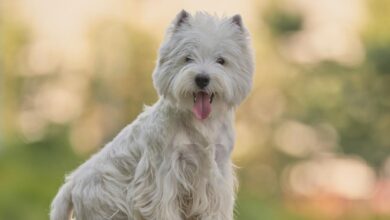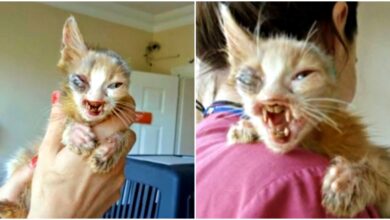7 Stunning Variations with Pictures
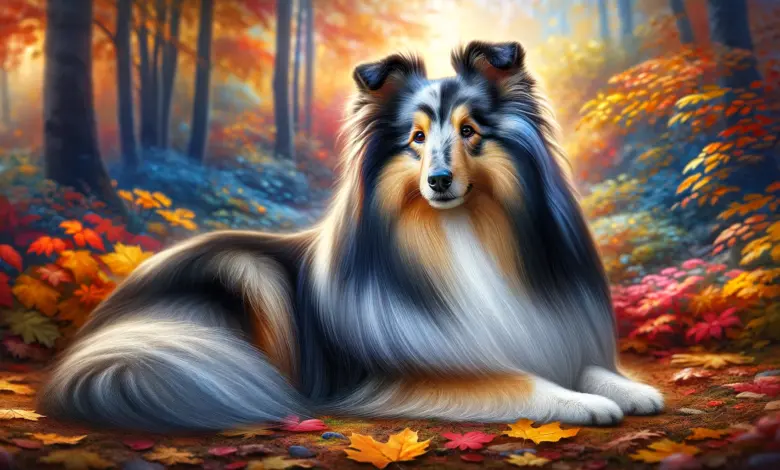
Shetland Sheepdogs, affectionately known as Shelties, are renowned not only for their intelligence and agility but also for their striking and diverse coat colors. Originating from the rugged Shetland Islands, these small herding dogs carry a genetic palette that expresses a delightful array of colors. These variations do more than just provide aesthetic appeal; they speak to the rich genetic tapestry inherent to the breed. From the classic sable to the rare bi-blue, each color variation of the Sheltie has its own unique charm and set of characteristics that can influence everything from the dog’s appearance to its popularity in shows. This article explores seven stunning Sheltie color variations, each accompanied by vivid descriptions and visuals to highlight the beauty and distinctiveness of this beloved breed.
1. Sable

The sable Sheltie is perhaps the most iconic and common coloration within the breed. Ranging from light golden to deep mahogany, the sable color is characterized by a predominantly light-colored coat that features black tipping on the ends of the hairs. This gives the Sheltie a shimmering, almost glowing appearance, especially in sunlight. In show circles, the depth and evenness of the sable color can significantly impact a dog’s show potential. Puppies often change in intensity as they grow, leading to considerable variation even within this single color type. Owners often find that the sable’s warm hues not only make them stunning to look at but also photograph exceptionally well, capturing the hearts of Sheltie enthusiasts worldwide.
2. Tricolor
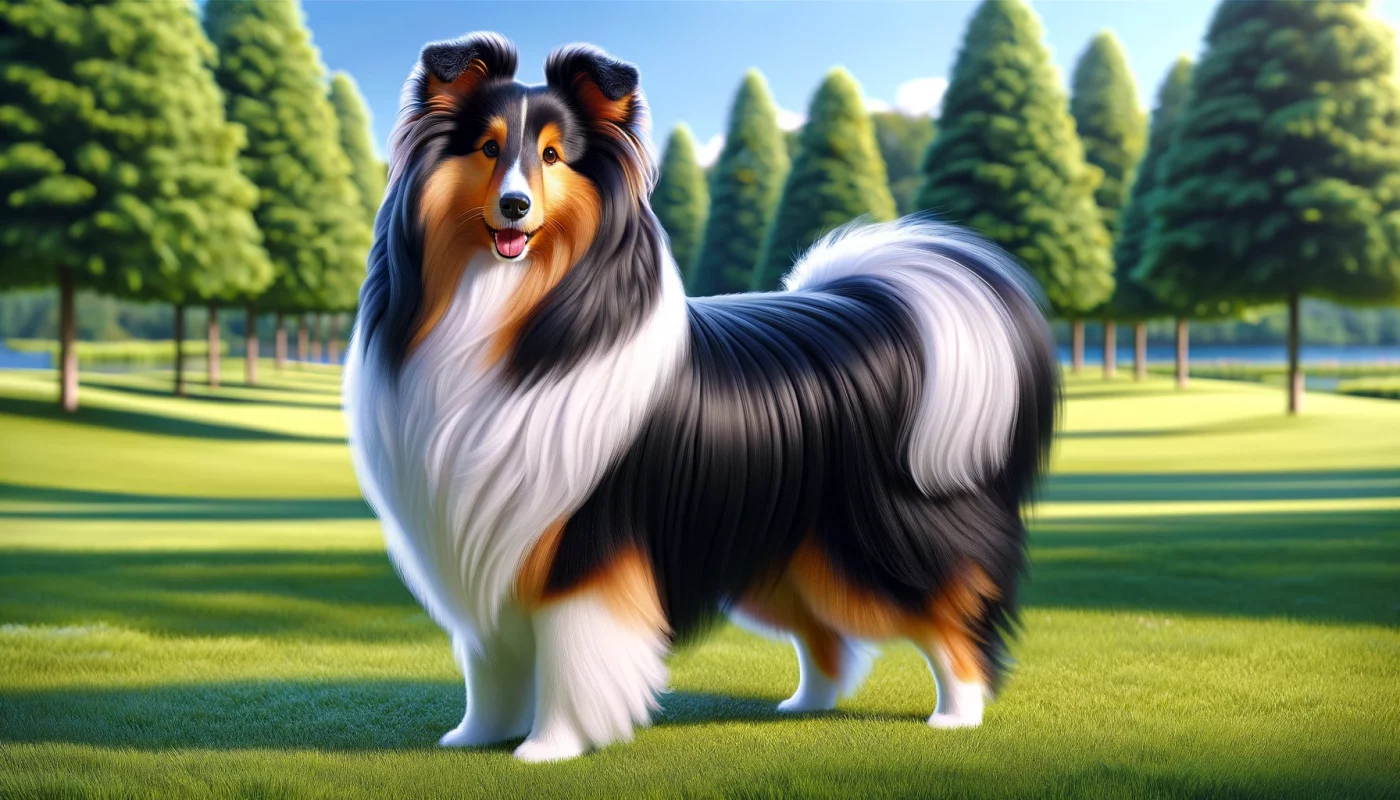
Tricolor Shelties are a dramatic blend of black, white, and tan. Their coat predominantly features a solid black base with tan markings typically above the eyes, on the cheeks, and sometimes on the legs, with white areas on the chest, neck, legs, and tip of the tail. This striking contrast in colors makes the tricolor Sheltie a standout in any setting. While common, the sharp delineation of colors can vary greatly among individuals, making each tricolor Sheltie distinct. The rich black coat, when well-maintained, has a sleek, velvety appearance that complements the crisp white and warm tan accents beautifully.
3. Blue Merle
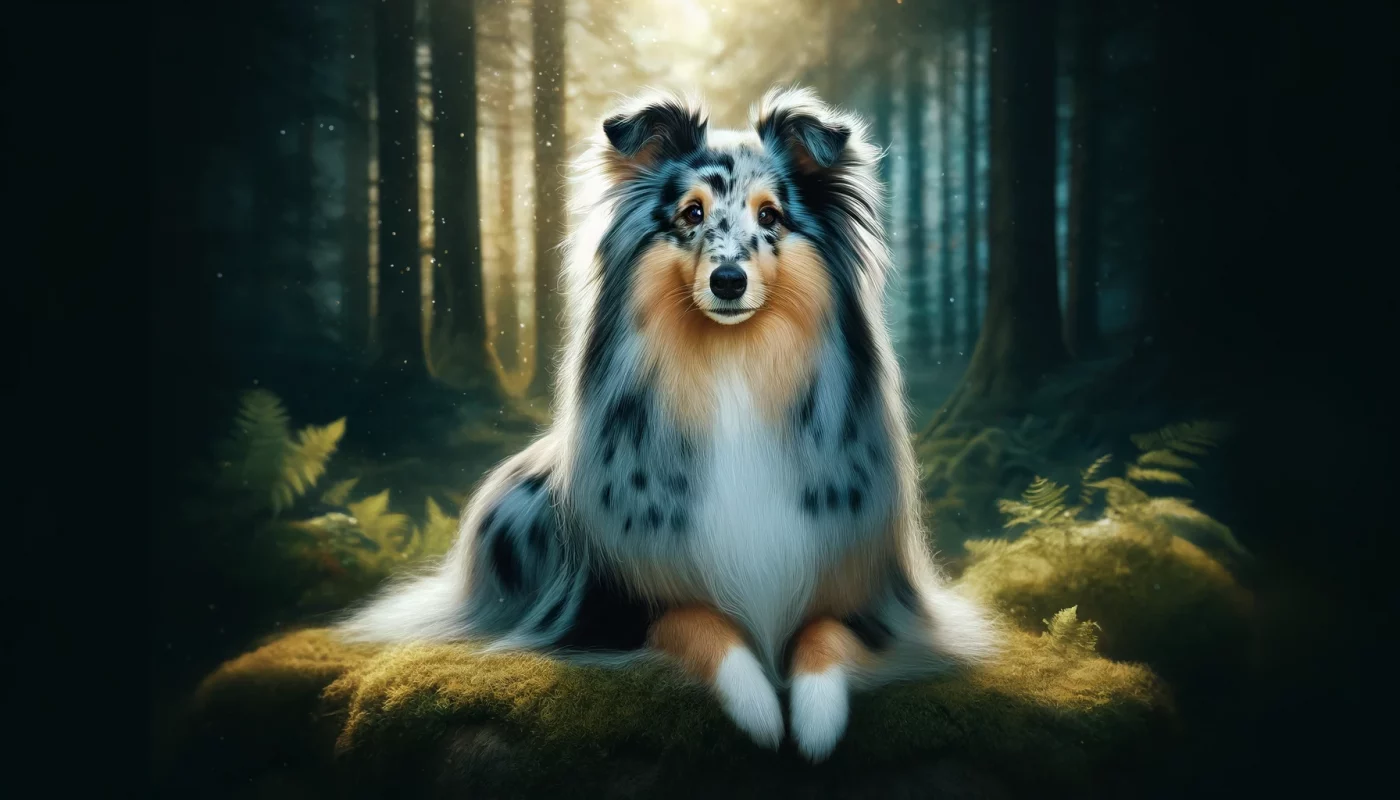
Blue merles are one of the more visually captivating Sheltie color variations. They exhibit a unique speckled or marbled pattern of blue-gray and black across their coat, often interspersed with tan markings. The merle gene that creates this pattern can also affect the dog’s eye color, resulting in blue or partially blue eyes, which are highly prized. Because the gene can be associated with health issues such as deafness and blindness when improperly bred, responsible breeding practices are essential. Visually, blue merles are particularly striking due to the unpredictable and unique patterns, making each dog distinctively one-of-a-kind.
4. Bi-Black
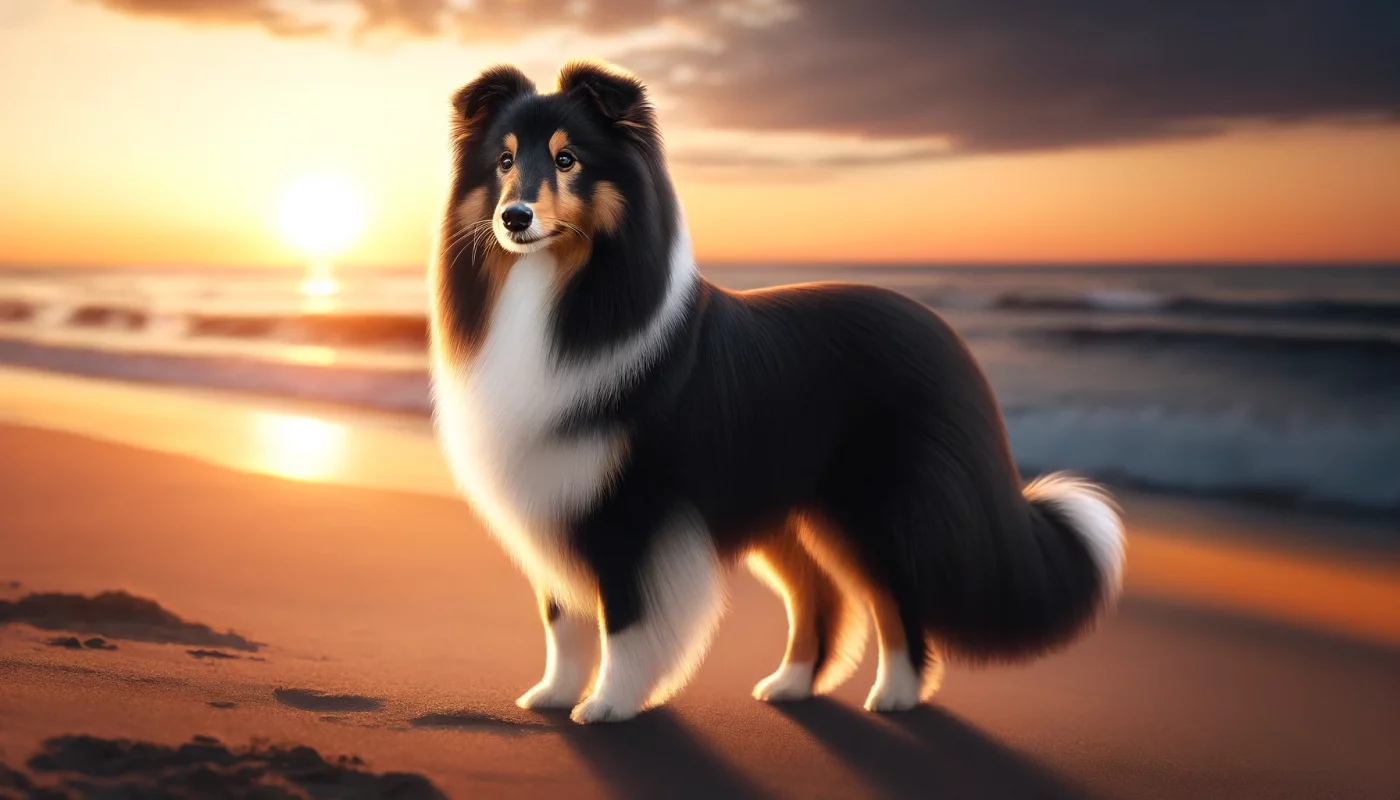
Bi-blacks are essentially the tricolor Sheltie without the tan markings, featuring a stunning black and white coat. This color variant emphasizes a sleek black coat accompanied by stark white markings, giving these dogs a sophisticated tuxedo look. Bi-blacks are less common than their tricolor and sable cousins, which can make them a somewhat rare sight in the show ring and in breeding circles. The contrast between the black and white can vary from dog to dog, with some having more extensive white markings than others. This simple yet elegant color combination can make bi-blacks particularly photogenic and striking in appearance.
5. Bi-Blue

Bi-blue Shelties are similar to blue merles but lack the tan markings, featuring instead the beautiful blue-gray and black marbling associated with the merle pattern, alongside white areas. This rare color variation offers all the visual appeal of blue merles but with an even more mystical and ethereal look due to the absence of tan. Like blue merles, bi-blues can also have blue or heterochromatic eyes, adding to their enchanting appearance. The bi-blue coat is a testament to the breed’s genetic diversity and the stunning effects that can result from the careful selection of breeding pairs.
6. Sable Merle
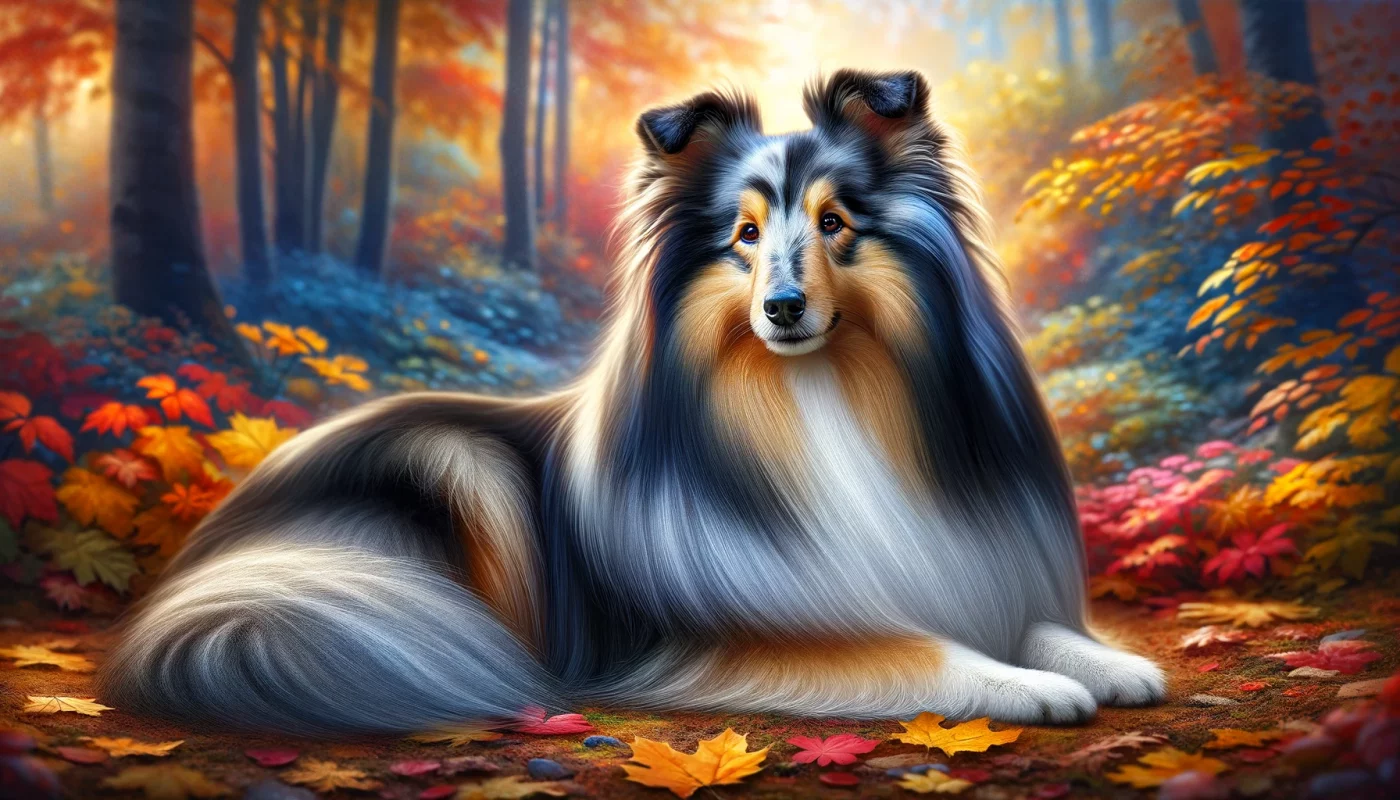
Sable merles are a less commonly seen variant, featuring the sable coloration with patches of diluted pigment which can appear blue or gray. This subtle merling adds a layer of complexity to the already beautiful sable coat. Sable merles can be difficult to identify, especially as puppies, because their merle markings can fade as they mature. The intricate interplay of colors can make sable merles particularly stunning, especially in sunlight where their coats can display a range of hues and patterns.
7. Color-Headed White

Color-headed whites are predominantly white, with the standard Sheltie colors (sable, tricolor, or blue merle) appearing only on the head and sometimes on the back. This dramatic look is due to a modification of the white factor gene, which dramatically increases the amount of white in the coat. While some breed standards might restrict the amount of white permissible in the show ring, these dogs are nonetheless admired for their distinctive and eye-catching appearance. Color-headed whites stand out due to their starkly contrasting patches of color against a primarily white body, offering a canvas-like display that showcases the beauty of their colorful markings.
In conclusion, Shelties come in a breathtaking variety of colors, each with its own special allure. From the classic sable to the ethereal bi-blue, these color variations not only enhance the breed’s aesthetic appeal but also contribute to its popularity and admiration. Whether you are a prospective Sheltie owner or a seasoned enthusiast, understanding and appreciating these color variations can deepen your appreciation for this versatile and charming breed.
Frequently Asked Questions About Shelties Colors
1. What is the most common color of Shelties?
The most common color of Shetland Sheepdogs (Shelties) is sable. This color ranges from light golden to rich mahogany, and the dogs have a predominantly light-colored base coat with black tipping on the individual hairs. Sable Shelties can vary significantly in the intensity and distribution of the sable and black hues, making each dog uniquely beautiful. Puppies often change shade as they mature, sometimes starting off much lighter and deepening in color as they age. The appeal of sable Shelties lies in their warm, golden tones that shimmer under the sunlight, making them a perennial favorite among Sheltie enthusiasts and a frequent winner in the show ring due to their striking appearance.
2. Are blue merle Shelties rare?
Blue merle Shelties are considered relatively rare compared to other Sheltie colors like sable or tricolor. The blue merle pattern features a unique and striking mix of blue, gray, and black patches, often accompanied by tan markings and sometimes blue or partially blue eyes. The rarity of this color variation adds to its appeal. Blue merle Shelties require careful breeding practices to avoid health issues associated with the merle gene, such as deafness and visual problems. Responsible breeding practices are essential to ensure that these dogs are not only beautiful but also healthy. Their distinctive, marbled coat pattern makes each blue merle Sheltie unique, adding to the desirability of this color among enthusiasts and breeders.
3. Can Shelties be solid black?
No, Shelties cannot be completely solid black. The closest color variation to solid black in Shelties is the bi-black, which consists of black and white without any tan markings. Bi-black Shelties have a predominantly black coat with white usually appearing on the chest, neck, legs, feet, and the tip of the tail. This coloration gives them a sleek and striking appearance, similar to wearing a classic tuxedo. Although bi-blacks are predominantly black, the white markings significantly break up the black, preventing them from being solid black.
4. What does the term “sable merle” mean in Shelties?
Sable merle Shelties are a color variation where the dog has a sable base color with patches of diluted pigment which can appear blue or gray. These patches are caused by the merle gene, which lightens random sections of what would otherwise be a standard sable coat. Identifying a sable merle can be challenging, especially as the dog matures, because the merle patterning may become less noticeable over time. This coloration offers a subtle beauty, with the intriguing merle effect adding an additional layer of depth and complexity to the already attractive sable coat. Sable merles can be particularly stunning in natural light, which highlights the unique patterns in their fur.
5. How does the bi-blue color differ from blue merle in Shelties?
Bi-blue Shelties differ from blue merle Shelties primarily in the absence of tan markings. Both colorations involve the merle gene, which creates a marbled or speckled pattern of blue and gray against black. However, bi-blues have this pattern distributed across a white and black base without the tan points typically found on the cheeks, eyebrows, and legs of blue merles. This results in a more ethereal and uniform appearance, giving bi-blues a somewhat more mystical look compared to their blue merle counterparts. Bi-blue Shelties can also have blue or heterochromatic eyes, enhancing their striking appearance.
6. What are the potential health issues related to merle-colored Shelties?
Merle-colored Shelties, including blue merle and bi-blue, can be prone to specific health issues due to the merle gene. This gene affects pigment production and can lead to auditory and visual impairments, including increased risk of deafness and eye abnormalities such as microphthalmia (small eyes), colobomas (defects in the eye structure), and even blindness. It is crucial for breeders to conduct responsible breeding practices, such as avoiding mating two merle-colored dogs together, as this increases the likelihood of producing double merle offspring who are at a higher risk of severe health problems. Regular health screenings and genetic testing can help manage and prevent the propagation of these issues in Sheltie populations.
7. Can Shelties have green eyes?
It is extremely rare and atypical for Shelties to have green eyes. Sheltie eye color typically ranges from dark brown to blue, with variations depending largely on their coat color and genetic background. Blue eyes are most commonly seen in merle-colored Shelties due to the gene affecting pigmentation, which can also influence eye color. However, green eyes are not a standard characteristic for the breed and are not recognized within breed standards. If a Sheltie does have greenish eyes, it would be an unusual genetic anomaly rather than a breed-specific trait.
8. What is a color-headed white Sheltie?
A color-headed white Sheltie has a predominantly white body with colored markings restricted primarily to the head, and sometimes the back. This striking pattern is due to a genetic factor known as the extreme white piebald gene, which causes a significant increase in white areas, reducing the pigmentation on the rest of the body. Color-headed whites can have any of the standard Sheltie colors (such as sable, tricolor, or blue merle) on their heads. While visually striking, this coloration can be less favored in certain show rings depending on the breed standards that may call for more balanced body coloration.
9. Are there any color restrictions for Shelties in dog shows?
Yes, there are color restrictions for Shelties in many dog shows, particularly those governed by organizations like the American Kennel Club (AKC). The AKC breed standard specifies acceptable colors and markings, and some non-standard colors or patterns may be penalized or disqualified in the show ring. For instance, a Sheltie exhibiting brindle or a predominantly white coat (more than 50% white) might not be allowed to compete. The standards aim to maintain the breed’s traditional appearance and ensure that the dogs displayed in shows are representative of the breed as defined by the club’s guidelines.
10. How do I maintain the coat color of my Sheltie?
Maintaining the coat color of your Sheltie involves several care practices to ensure their fur remains vibrant and healthy. Regular grooming is crucial, as it removes dirt and debris that can dull the coat’s natural color. Use shampoos formulated for color enhancement, particularly those tailored to specific coat colors, to brighten and maintain the fur’s hue. Protecting your Sheltie from excessive sun exposure is also important, as prolonged sunbathing can lead to bleaching and color fading, especially in darker coats. Additionally, a nutritious diet rich in essential fatty acids can help enhance the natural luster and pigmentation of your Sheltie’s coat, keeping it as vibrant as genetically possible.
